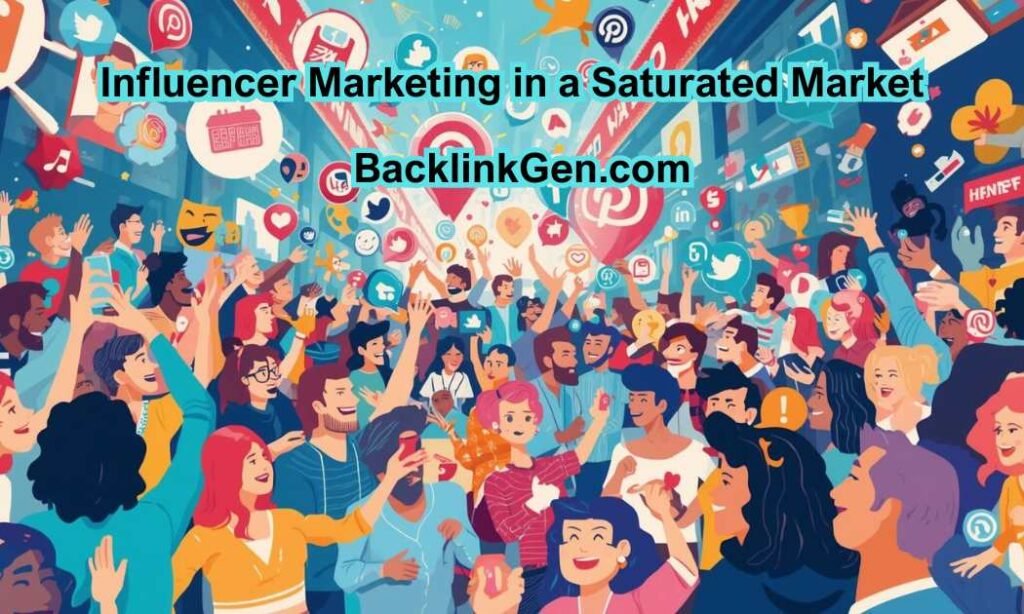By Amit T, Digital Marketing Strategist
I’ll be blunt: the era of sending free products to influencers with large followings and hoping for a sales spike is over. The market is flooded. Consumers are ad-blind, and influencers are overwhelmed with partnership requests.
But here’s the secret I’ve learned after running campaigns for IT consultancies and e-commerce brands in crowded spaces: saturation doesn’t kill opportunity; it kills laziness. The brands that win aren’t the ones with the biggest budgets, but the ones with the most sophisticated strategy.
In a saturated market, influencer marketing stops being a mere transaction and becomes a strategic partnership built on co-creation and authenticity. Here’s how to do it right.
Why Most Influencer Campaigns Fail Today
Before we build a winning strategy, let’s diagnose the common failures:
- The Spray-and-Pray Approach: Working with any influencer who says “yes,” leading to mismatched audiences and zero impact.
- The Follower Count Fallacy: Prioritizing vanity metrics over genuine engagement. A 100K follower account with 0.5% engagement is less valuable than a 10K account with 8% engagement.
- The Generic Brief: Sending a one-size-fits-all script and expecting authentic content. The result is a forced, ad-like post that resonates with no one.
- The One-Night-Stand Model: A single, isolated post with no follow-up or integration into your broader marketing strategy.
The 4-Pillar Framework for Saturated Markets
To break through, you need a methodical approach. I call it the “3C + R” Framework.
Pillar 1: Connection Over Coverage
Forget reach. Your primary filter should be the strength of the connection between the influencer and their community.
- How to Vet for Connection:
- Engagement Rate is King: Calculate it manually. (Likes + Meaningful Comments) / Followers * 100. Look for rates above 3-5%. Scrutinize the comments—are they generic (“Nice pic!”) or substantive (“Where did you get this? I’ve been looking for something exactly like this!”)?
- Community Responsiveness: Does the influencer actually reply to comments and questions? This signals a dedicated, two-way relationship.
- Niche Authority: An influencer known specifically for “budget home cooking” is infinitely more valuable for your kitchen appliance brand than a generic “lifestyle” influencer with ten times the followers.
“In a noisy room, a trusted whisper in a small circle is more powerful than a shout to a disinterested crowd.”
Pillar 2: Co-Creation Over Control
You are not hiring an ad agency; you are partnering with a creative expert who understands their audience better than you ever will. Your role is to provide the “What” and “Why,” and empower them with the “How.”
- The Perfect Brief:
- The Goal: “We want to demonstrate how our battery bank is a reliable power source for a weekend camping trip.”
- The Key Message: “Focus on the peace of mind that comes with having dependable power off the grid.”
- The Freedom: “Show us what that means for you and your specific audience. We trust your creative direction.”
- Provide a “Mood Board,” Not a Script: Give visual and tonal inspiration, not a rigid set of commands. This fosters authenticity, which is the currency of influence.
Pillar 3: Content Repurposing Over a Single Post
A single Instagram Story that disappears in 24 hours is a poor return on your investment (both monetary and relational). The real power is treating the influencer as a content creator for your entire ecosystem.
- Negotiate for Usage Rights: In your contract, secure the rights to repurpose the content they create.
- Your Repurposing Playbook:
- Turn a YouTube review into a 30-second testimonial for your website.
- Use their high-quality Instagram photos in your Facebook ads and product pages.
- Embed their TikTok video in your sales email sequence.
- Quote their caption in a blog post or infographic.
This approach transforms the cost of the partnership into an investment in a library of authentic, high-converting marketing assets.
Pillar 4: The Relationship (The “R”) – Building a Roster, Not a List
The most powerful strategy is to move from one-off collaborations to long-term ambassador relationships.
- Why it Works:
- Authenticity Grows: Followers can tell when a partnership is genuine and long-standing.
- Content Improves: The influencer becomes more familiar with your product and can create more nuanced, effective content over time.
- Efficiency Increases: The negotiation and onboarding process is eliminated for subsequent campaigns.
The “Micro-Influencer Pod” Strategy: My Go-To Tactic
For a recent launch in a saturated market, I bypassed the big names entirely. Instead, I built a “Micro-Influencer Pod.”
- The Setup: I identified 8-10 micro-influencers (5K-25K followers) in the same tight-knit niche (e.g., “sustainable home enthusiasts”).
- The Execution: We coordinated a “launch week” where all partners posted their unique, co-created content about our product within the same 7-day period.
- The Result: Their collective, authentic voices created a powerful echo chamber effect. Followers saw the product multiple times from different trusted sources, creating a sense of momentum and validation that a single post from a mega-influencer could never achieve. This strategy drove a 28% higher conversion rate than any previous influencer campaign.
How to Track What Actually Matters
Move beyond vanity links and track real business impact.
- Trackable Links & Codes: Use UTM parameters and unique discount codes for each influencer.
- Direct Revenue Attribution: Monitor sales generated from their codes/links.
- Engagement with Repurposed Content: Track click-through rates on emails featuring their content or performance of ads using their visuals.
- Audience Growth: Monitor the quality of followers you gain from the campaign—are they engaging with your brand afterward?
The Red Flags of a Bad Partnership
- Follower/Engagement Discrepancy: A large follower count with very low engagement is a sign of inauthentic growth.
- Generic Praise: If their caption could be about any product in your category, it’s a bad sign.
- No Personal Experience: The influencer can’t speak to genuine, personal use-cases of your product.
Your 30-Day Game Plan for a Saturated Market
Week 1: Deep Dive & Identification
- Manually research and vet 20-30 potential partners using the “Connection” criteria. Look for those already using or talking about products in your category.
Week 2: Personalized Outreach
- Craft a personalized outreach DM or email. Mention a specific post of theirs you liked and why you think they, specifically, are a good fit. No copy-pasting.
Week 3: Co-Creation & Launch
- Onboard your chosen partners with a collaborative brief. Grant creative freedom and negotiate content usage rights.
Week 4: Amplify & Analyze
- Repurpose the content across your marketing channels. Track performance against your key metrics and identify your top performers for future ambassador relationships.
“In a saturated market, influence isn’t about how many people see you. It’s about how deeply you can convince a few that your product belongs in their story.”
– Amit
Stop chasing influencers and start building partnerships. It’s the only way to make yourself heard when everyone else is shouting.
About Amit: With over 15 years of experience cutting through digital noise, Amit helps brands build influencer partnerships that feel authentic, drive conversions, and create a library of valuable marketing assets.

